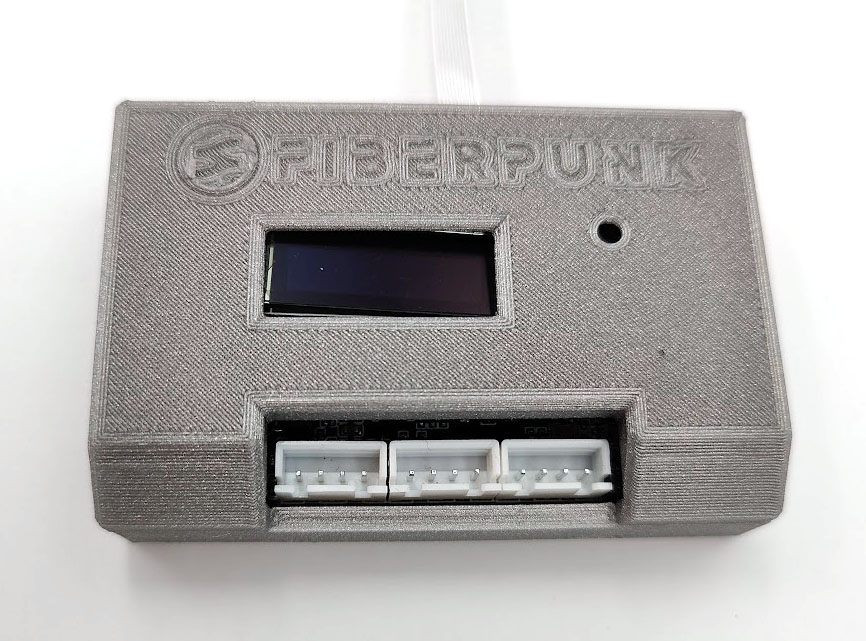Launching today from Fiberpunk, Node is an affordable and robust way to add WiFi and accessories to Creality Ender 3 printers (V1, V2) and Prusa MK3S. It consists of an ESP-32 based board with open-source firmware, an OLED display, and a unique SD bridge that makes print faster and more reliable. At $29, it is the most affordable option on the market.
With a 3D printable case, the Node board is very easy to install by simply plugging it into the USB port. It is a robust ESP32 based board that boots instantly and does not need to shut down like Pi. Via its Unique dual UART + SDIO connection to the printer, it allows faster and more reliable data transfer to the printer via SDIO. At the same time, control and info are still sent via UART. This makes it easy to transfer files and monitor progress with an email notification alert. it si also expandable with a complete set of I/O ports. A filament sensor add-on will be released with Node. In addition, it comes with fleet management software that can run locally without the need to log into a cloud server, featuring an open-source firmware to customize for potentially other types of equipment like CNC machines.

In the early stages, Node will be available only on Creality Ender 3 and Prusa MK3S 3D printers. That’s because the biggest challenge for making any type of electronics for 3D printers is the myriad of control boards, electronic controls, firmware versions. To create the best user experience and printer compatibility, Fiberpunk narrowed the focus to the best-selling printer line Creality Ender 3 V1 and V2 and Prusa MK3S. It does not mean Node is only compatible with those three printers. They have also tested Neptune 2, Ender 5, and expect to extend compatibility with many more printers.
Manufacturing on Demand
Made by Fiberpunk
Fiberpunk was founded in 2019 with the motto of making 3D Printing smarter. Team members include Mark Peng, founder of Peopoly and Siraya Tech, and Noah Chen as CTO with over ten years of combined experience developing 3D printers and materials. While FDM and resin 3D printers have made great strides, especially in the under $2,000 category, many printers are still using outdated or inefficient electronics and often lack even essential wireless network functions. This led to the development of Node, which is easy to install, robust to use, and affordable. Fiberpunk also sees Node as a gateway to add more intelligent functions to 3D printers, including machine vision for fault detection, closed-loop feedback control, and other peripherals.
“The idea here is to create a simple yet Robust way to link many existing filament extrusion printers to the network and have easy-to-access ports to add-ons,” Mark Peng told 3dpbm. “It may sound like something that already exists on the market but the unfortunate truth is that is solutions either do not print well, are not user-friendly, or becoming too expensive. Node prints very well (see data in backgrounder), only costs $29.99, and opens low-cost printers to more add-ons and functions. We intended Node as the gateway device to many future add-ons and services.”
Current alternatives

“We are good friends with the Octoprint team, and we have discussed the Node project with Gina at Octoprint on numerous occasions,” ark Peng said. “Peopoly is a sponsor of the Octoprint project. We are going to integrate Node with the Octoprint ecosystem via plugins in the near future.”
* This article is reprinted from 3D Printing Media Network. If you are involved in infringement, please contact us to delete it.
Author: Davide Sher


Leave A Comment